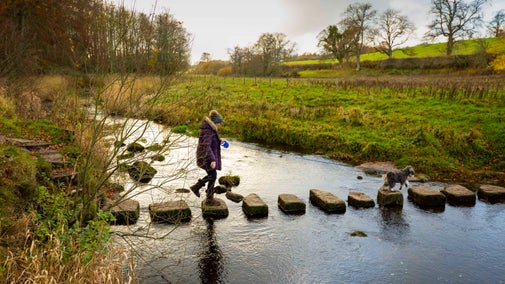
Find out more about Dunwich Heath
Find out how to get to Dunwich Heath, where to park, things to see and do, and more.

Dunwich Heath, along with its nearby beach and woodland, is ideal for people who want to stretch their legs while enjoying the best that nature has to offer. The area has a remarkably diverse range of wildlife, and is famous for the nationally rare Dartford warbler. Nature lovers will be spoiled for choice here; just make sure to bring your binoculars and a camera!
The pink walk covers most of the heathland and offers plenty of chances to see the variety of heathland birds, such as the stonechat, the skylark and the Dartford warbler.
Head down to the beach and spend some time sitting on the shingle, or walk along the clifftop path for the best chance of spotting seabirds.
Follow the grey walk if you're a reedbird and wader enthusiast. The more southerly section along Docwra’s Ditch is perfect, and there are benches dotted along its length to stop and search with your binoculars.
If you want to see woodland birds, either the orange or the pink walk is your best bet, as both travel past or through good patches of trees.

Dunwich Heath is famous for its bird life. There are a number of resident species, while others migrate here for the summer or winter. Of those that live here permanently, there are a number of very rare species that it's illegal to disturb. The most famous is the Dartford warbler, alongside the now red-listed skylark.
As Spring starts in Britain, flowers bloom and nature wakes from its slumber. Then from March and April the Schedule One summer migrants arrive to add their rare numbers to the locals, accompanied by other less rare but truly spectacular species.
Hobby:
Stone Curlew:
Sand Martin:
Nightjar:

Winter time is the best for spotting deer, and if you're looking for where, head up the diagonal orange path through the heath, turn left and then follow the pink walk back to the car park.
Keep your eyes peeled as the deer are surprisingly hard to spot. As for when to spot them, the hinds occasionally appear with their calves in the summer, but for glimpses of the magnificent stags the colder months are best, especially the autumn when the ‘rut’ happens. This is the ritual where males proclaim their territory and fight for females.

If you're visiting with the family there are a whole host of things you can do with your little ones:
Download the Dunwich Discovery trail here
Download the Tree Trek here

Find out how to get to Dunwich Heath, where to park, things to see and do, and more.

Dunwich Heath is a three pawprint rated place. The nature reserve is a wonderful place to explore with your dog. Here’s all you need to know about visiting with your four-legged friend.

Dunwich Heath has a surprisingly turbulent past, from smugglers' haven and coastguard station, to witness for the east coast war channel and training area for D-Day, there is so much more to the heath than meets the eye...

There are many different ways that volunteering with the National Trust at Dunwich Heath can benefit you. Find out more about the roles and get in touch.

Enjoy the seasonal spectacle of purple heather in bloom with these walks across heathland and moorland.

Plan a visit to one of the special countryside places in our care and discover the benefits of being in the great outdoors. Pack your walking boots and get ready to explore woodlands, valleys and rivers.

Explore the varied landscape of Suffolk, including heathland, an Anglo-Saxon burial ground and scenery made famous by the landscape artist John Constable.

Explore some of the finest landscapes in our care on coastal paths, accessible trails, woodland walks and everything in between. Find the best places to walk near you.